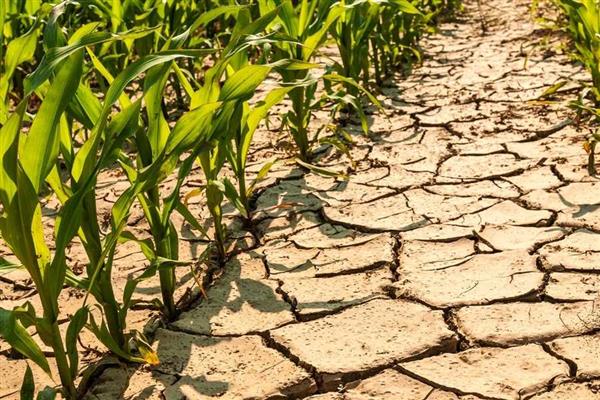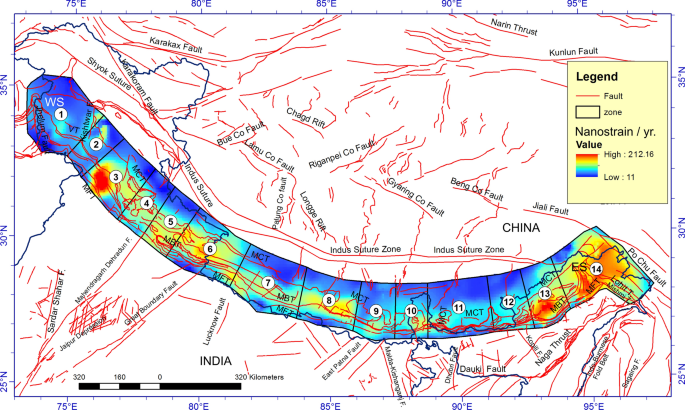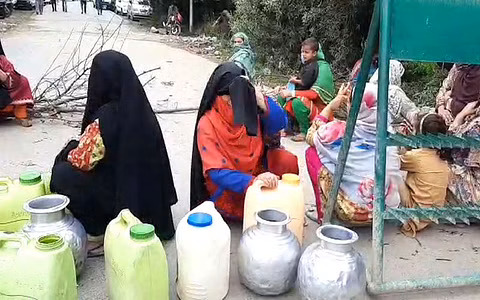By Faizan Arif
Over the past four weeks, Jammu and Kashmir has been grappling with a significant shortfall in rainfall. According to India Meteorological Department data related to the Standardized Precipitation Index (SPI), approximately 80 percent of the area in Kashmir region (8 out of 10 districts), has been impacted by moderate to extreme dryness between August 3rd and August 30th.
The SPI, relying on precipitation data, is a widely utilized index for characterizing meteorological drought on a range of timescales. This index is negative for drought and positive for wet conditions. “It quantifies observed precipitation as a standardized departure from a selected probability distribution function that models the raw precipitation data.” SPI values are categorized as follows: Extremely Dry (<= -2), Severely Dry (-1.50 to -1.99), Moderately Dry (-1.0 to -1.49), Mildly Dry (0 to -0.99), Mildly Wet (0 to 0.99), Moderately Wet (1.0 to 1.49), Severely Wet (1.50 to 1.99), and Extremely Wet (>= 2).
Poonch experienced an extremely dry condition with an SPI value of -3.14, while Srinagar district was severely dry with an SPI value of -1.73. The districts of Kupwara, Bandipora, Baramulla, Budgam, Anantnag, Shopian, Pulwama, Ramban, and Doda fell into the moderately dry category, with SPI values of -1.19, -1.09, -1.12, -1.21, -1.31, -1.01, -1.17, -1.05, and -1.47, respectively. Ganderbal, Kulgam, Rajouri, and Udhampur experienced mild dryness, with SPI values ranging from 0 to -0.99. Reasi, Jammu, Samba, and Kathua were mildly wet, with SPI values ranging from 0 to 0.99. The data for Kishtwar district was not available.
Monsoon Roller Coaster: Jammu and Kashmir’s August Rainfall Scarcity
During the month of August, the Union Territory of Jammu and Kashmir witnessed a notable rainfall deficiency of 29%. Instead of the usual 184.9 mm of rainfall, the UT received only 131.1 mm. The majority of this precipitation was concentrated in the Jammu region, while the Kashmir valley experienced a significant shortfall in rainfall.
June and July got off to a good start with a significant excess of rainfall in both Kashmir and Jammu. July, in particular, was noteworthy for having an impressive 35% surplus in rainfall, while June had an 8% surplus. The monsoon experience in Jammu and Kashmir has been quite erratic, commencing with a cumulative 27% surplus in rainfall for June and July (cumulative) and then ending at an 8% surplus when considering the entire three-month period.
During the month of August, Poonch district faced a staggering 95% rainfall deficit, receiving only 10 mm of precipitation compared to the average of 201.3 mm. On the opposite end of the spectrum, Samba district saw the highest rainfall, exceeding the norm by 30%. It recorded 416.0 mm of rainfall against the usual 319.5 mm. Srinagar experienced an 88% shortfall in rainfall, registering just 9.5 mm instead of the typical 76.8 mm, while Jammu witnessed a 16% deficit in rainfall, receiving 55.6 mm less than the average 355.8 mm. Overall, ten districts — Srinagar, Anantnag, Budgam, Bandipora, Kupwara, Pulwama, Shopian, Doda, Poonch, and Ramban — encountered ‘large deficient’ rainfall, while five districts — Baramulla, Ganderbal, Kulgam, Rajouri, and Udhampur — experienced ‘deficient’ rainfall. Three districts — Jammu, Kathua, and Reasi — recorded ‘normal’ rainfall, and Samba district experienced ‘excess’ rainfall. The data for Kishtwar district was unavailable.
As per India Meteorological department when the realised rainfall is ≥60%, 20% to 59%, -19% to +19%, -59% to -20%, and -99% to -60% of long period average (LPA), the rainfall is categorized as large excess, excess, normal, deficient, and large deficient respectively.
How Common Is This?
Looking at August’s total rainfall, the Srinagar weather station recorded a mere 9.2 mm, marking the lowest August rainfall since 1998 when it registered 8.8 mm. This also ranks as the fourth lowest August rainfall since 1975. In 1993, there was a total rainfall of 8.4 mm, and in 1987, it was only 2.7 mm. Kupwara, on the other hand, saw only 18.1 mm of rainfall in August, the lowest since 2009 when it received 13.9 mm. This stands as the third lowest August rainfall since 1990. In 2001, 14.3 mm rainfall was recorded at the station. Gulmarg reported just 36.7 mm of rainfall in August, which is the lowest since 2009 and ranks as the fifth lowest since 1980. For reference, in 2009, it had 17.4 mm, in 2005 it was 25.0 mm, in 2003 it was 34.1 mm, and in 1993 it had 26.5 mm of rainfall. Kokernag observed its lowest August rainfall since 1998, with a total of 24.1 mm. In 1998, it recorded 22.5 mm during the month, making it the third lowest August rainfall for the station. The second lowest was in 1993 with 13.1 mm. Pahalgam recorded its second lowest precipitation since the establishment of the weather observatory in 1978, with a total of 35.9 mm. In 1987, it recorded 31.3 mm.
- The historical lowest recorded rainfall figures in the month of August for the mentioned locations are as follows:
- Srinagar’s all-time lowest rainfall occurred in 1987 with just 2.7 mm.
- Kupwara’s lowest ever recorded rainfall was 13.9 mm in 2009.
- Gulmarg’s record low for rainfall is 17.4 mm in 2009.
- Kokernag saw its driest period in 1993 with only 13.1 mm of rainfall.
- Pahalgam’s lowest recorded rainfall was 31.3 mm in 1987.
Apart from the notable shortfall in rainfall, the month of August experienced consistently elevated average temperatures, with some days even registering heatwaves. Srinagar, for instance, recorded average maximum temperature for the month that was nearly 2 degrees Celsius higher than the usual, and a minimum temperature approximately 1 degree Celsius above the average. On August 22, the maximum temperature in Srinagar surged to 34.6 degrees Celsius, exceeding the normal by 4.8 degrees Celsius, thereby meeting the official criteria for a heatwave.
Water Levels & Future Weather Forecast
The Jhelum River has witnessed a significant decline in its water level. According to the measurements taken at 9 a.m. on September 02, the Jhelum River was flowing at 0.49 feet at Sangam. At the same time, it registered 3.00 feet at Ram Munshi Bagh in Srinagar and 1.94 feet at Asham. This decrease in water levels also extended to all the Jhelum River’s tributaries. At 9 a.m. on September 02, the Vishow Nallah at Khudwani had a flow of 2.38 meters, the Rambiyara Nallah at Wachi measured 0.43 meters, the Doodhganga Nallah at Barazulla stood at 0.60 meters, the Lidder Nallah at Batkoot recorded 0.25 meters, and the Sindh Nallah at Doderhama measured 0.45 meters.
The monsoon deficit for the season is expected to increase as there are no promising signs of significant weather systems over the next 15 days. Despite the anticipation of two weak western disturbances in the next 5 days, which may bring showers, particularly in the Kashmir region, they are unlikely to deliver substantial rainfall to the Union Territory. Consequently, it seems that the monsoon has already exited the region, and the chances for its revival in Jammu and Kashmir within the next 10 days appear bleak.
#Kashmir, #DrySpell, #WaterScarcity, #ClimateChange, #Drought, #EnvironmentalImpact, #WeatherChallenges, #AgricultureImpact
Views expressed in the article are the author’s own and do not necessarily represent the editorial stance of Kashmir Post






